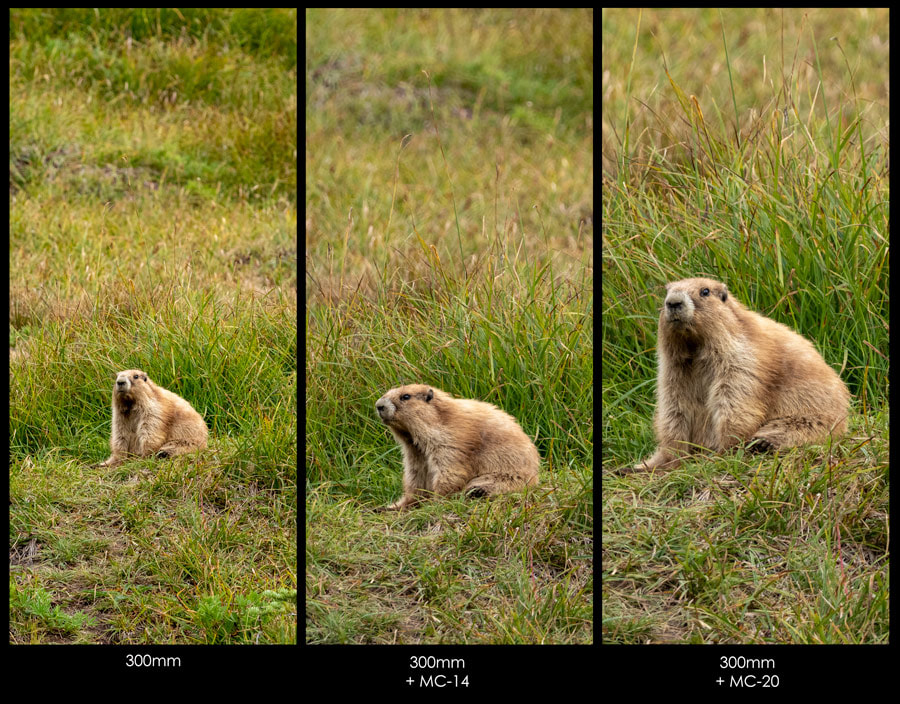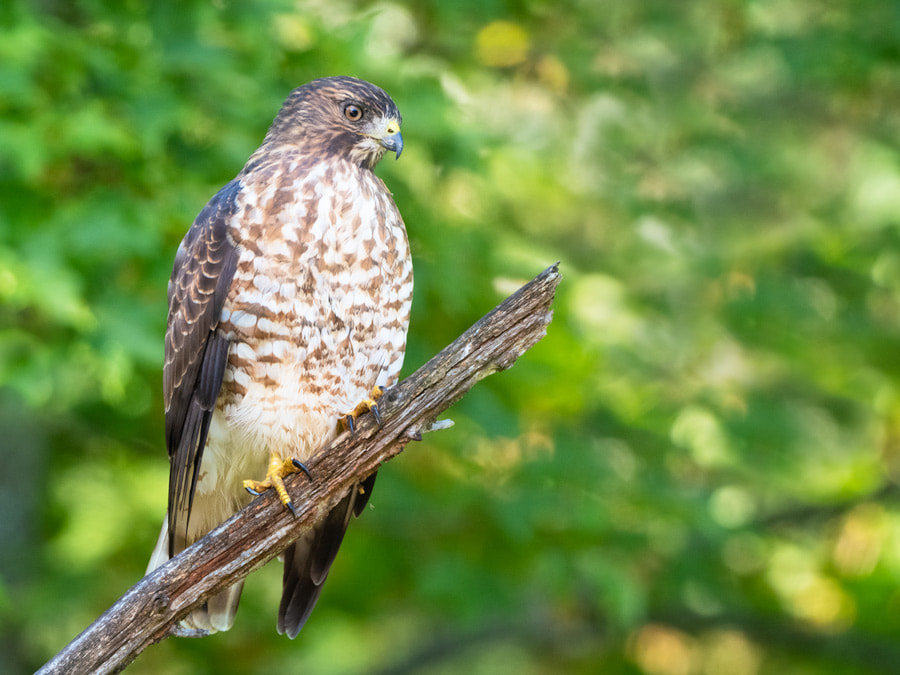A Look at the MC-20 TeleconverterDisclosure: I am an Olympus Visionary and as such, receive compensation from Olympus America. However, no compensation was paid for this review. I endorse their products because I truly believe in the quality of their gear. As a person who loves photographing wildlife, one of the most important tools in my bag is my super-telephoto lens - the M.Zuiko 300mm f/4 PRO. This gives me an equivalent focal length of 600mm when compared to full frame. For many situations that can be ample reach. But there are certainly times where you want to extend that reach and really pull in your subject. That's when a good teleconverter can come in handy. Until recently there was only one option from Olympus, the MC-14, a 1.4x converter that would bring the focal length to 420mm. Over the past couple of years I have used that teleconverter countless times to extend my reach and have been very happy with it. But even with that, there are times when I want my "go go gadget arm" to reach even farther. Enter the new MC-20 2x teleconverter. Let's start by clearly stating that this is not a review. This is me, extolling my love for what this teleconverter has allowed me to capture - images that wouldn't be nearly as impressive with just the 300mm lens on its own, or even with the 1.4x teleconverter attached. The MC-20 works with two of the lenses in the OMD PRO line-up of lenses, the 300mm f/4 and the 40-150 f/2.8. Within this write-up I am only focussing on how it works with the 300mm lens - my goto wildlife lens. There are a few details however to get out of the way for people who want to read some numbers;
Now, does the MC-20 really make a difference in the reach of the 300mm f/4? You bet! Perhaps the best way to show the difference is to photograph the moon, an object that all of us are familiar with and most have photographed at least once. I get the concept of enlarging something to twice its size, but to actually see it is something else entirely. The difference between photographing the moon with just the 300mm f/4 and then with the MC-20 attached is remarkable. Perhaps a more down-to-earth example (see what I did there) would be to show the difference when actually photographing wildlife. Recently I was in Olympic National Park and came across some marmots. They were cooperative enough that I had time to swap out the teleconverters and take a few shots with each. For these three images I remained in the same position and just exchanged teleconverters. Again, the difference in reach is quite remarkable. From a compositional standpoint I wasn't happy with any of these shots, so I stuck around awhile and thankfully this little guy decided to strike a more interesting pose. My biggest concern in using the MC-20 was the loss of two stops of light, thereby slowing the lens down to f/8. In the end it wasn't really a concern at all. Typically I am not shooting wildlife in low-light conditions and given the compression of the lens I'm still getting a good, defocused background. The image of the monarch butterfly below helps to illustrate both points. Even during a heavily overcast day I was able to capture a sharp image with a fast enough shutter speed and some great bokeh. One thing I really wanted to test was how well the image stabilization would work given that a longer focal length would amplify any camera shake. Olympus developed incredible in-body image stabilization within their OMD line-up and also included some great IS within some of their lenses that works in sync with the IBIS. I've definitely put the image stabilization to the test. The images below were all shot from my canoe, not the most stable platform from which to shoot. Final Words and Photos
I decided to write this article because I am truly impressed with the MC-20 teleconverter. It's small, light, and built to the same rugged standards as all of the Olympus PRO lenses. More importantly it performs incredibly well, giving sharp results under a variety of conditions. It performs so well that I leave it on my 300mm f/4 and only take it off when I don't need that extra reach. For more information about the MC-20 teleconverter check out the Olympus site.
21 Comments
9/14/2019 01:56:55 am
Thank you for this very informative article and sharing the photos with comparisons. This makes everything very clear. I have just received my new 40-150mm Pro + 1.4 converter and will be collecting my 2.0 converter next week.
Reply
Peter Baumgarten
9/15/2019 01:39:23 pm
Annette, I'm glad that you found the article useful. I'm sure you will enjoy the MC-20 when it arrives.
Reply
9/14/2019 08:25:06 am
Nice to read about the MC - 20. I just ordered mine and hope to receive it next week. But I do have a question isnt/'t the result the same if you take just the 300 mm and crop afterwards ?
Reply
Peter Archdale
9/15/2019 04:55:06 am
I would be interested in the answer to this question too.
Reply
Peter Baumgarten
9/15/2019 01:41:59 pm
Cropping an image to half its size would yield the same field of view but would have half the pixel data turning a 20 MP image to a 10MP image, and losing much of the detail. Using a teleconverter is a far better option. I hope that helps.
Reply
Peter Archdale
9/16/2019 02:49:42 am
Thank you Peter. That is a very clear reason to use a TC.
Tizio54
11/18/2019 02:26:49 pm
Cropping 50% to get the same angle of view as the MC-20 would result in a 5mp (not 10mp) image (0.5 x 0.5 = 0.25 x 20mp = 5mp) giving a much lower resolution image. 9/17/2019 10:56:07 pm
I just tried an MC20 w my 40-150 Pro and it was terrible. Not just soft, but smeared. The 40-150 is superb. Adding the 1.4 is almost as good. 2.0 was not useable. Sending it back and trying another one.
Reply
Peter
9/18/2019 10:24:28 am
That's unfortunate. Did you update the firmware on the 40- 150? You can't have the MC- 20 attached while updating.
Reply
Scott Braley
9/26/2019 01:57:19 am
I got a second MC20 (after the first was poor) and this one seems very good with the 40-150 2.8. It does take careful technique and a fairly high shutter speed to look its best. As much as I love the Oly IBIS, I think that 150mm is getting toward the max that the IBIS is able to handle well. 300 has it's combined IS, and probably is even better.
Reply
2/1/2020 11:30:52 am
Hi Scott, IBIS has been tested (empirically) by a number of sites starting with the old rule: "max exposure time = lens focal length" validating Olympus' claim. In practice, with the 40-150mm at 150mm you begin at 1/150sec and count down 5 f/stops (E-M5 mark II) while with the 300mm you start at 1/300sec and count down 6 f/stops. Stating that 150mm is the limit for IBIS to work well is unfounded. 11/4/2019 11:51:01 pm
What an great idea! Thanks so much for the good post and keep continue writing these kind of amazing post and also share on this blog. I want to share this site about Twitter, please go to my site
Reply
kay ellen Hamilton
1/11/2020 08:10:46 pm
Great clear article easy to follow as I am a beginner,but how do you upgrade a lens please?
Reply
Carbonman
1/13/2020 08:03:27 pm
Your Owner's Manual has instructions on updating lens firmware. You open Olympus Workspace, plug your camera with the lens you wish to update mounted into your computer and click on 'Camera". The software will provide prompts to update the lens and camera firmware.
Reply
Ingrid Standish
1/29/2020 10:25:02 pm
Would I get better results with the 40-150 PRO and MC20 at the resulting 300mm or with the 75-300 which I already own? I've been thinking about getting the 40-150 but want the extra reach for birds and wildlife. Can't afford the 300mm PRO.
Reply
2/1/2020 11:00:12 am
Hi Ingrid, I don't have the MC20 (yet!). I use the MC14 on the 40-150mm. Everything I read about the MC20 indicates that, matched with either the 40-150mm or the 300mm, the loss of quality is so minimal as to be irrelevant. Both are pro lenses and significantly outperform the 75-300mm. The 40-150mm + MC14 combination is extremely sharp and you should get the same IQ with the MC20. I used to have the 75-300mm and ended up selling it because I was not happy with its performance at 300mm.
Reply
Ingrid Standish
2/1/2020 01:19:11 pm
Thanks, Moreno. I appreciate your response. How do you find the weight of the 40-150 for carrying around all day? I'm one of those people who has moved up from a point and shoot rather than down from a full frame. Weight is an issue. 2/1/2020 06:16:14 pm
Hi Ingrid, when I want to travel light, I carry one E-M5 II with the 12-40mm f/2.8 and another one with the 40-150mm + MC14, plus a 9-18mm f/4-5.6, spare batteries and memory cards. It all fits in a medium size sling bag with phone, wallet, etc. I don't even notice the weight but used to carry heavy backpacks and tripods. Since the 40-150mm + MC20 combination is worth a nice piece of change, if you can rent one for a day and try it out yourself before making a final decision.
Reply
Ken Fong
5/11/2020 11:01:13 pm
Olympus Visionary Robin Wong recently posted a vlog stating that using the MC20 on the 300mm negates that len’s IS. Before viewing his vlog, I noticed that some of my 300 + MC20 shots weren’t as sharp as sans MC20. I think he said same negation occurs when using MC14 with 300mm (true?). Do you know this to be a fact?
Reply
Peter
5/12/2020 08:22:15 am
Robin does a great job on his reviews, but I think he may have gotten this one wrong. I use the 300 + MC-20 all the time and the IS works great. The same applies to the MC-14. As for softer photos with the MC-20 I have experienced this as well, but only when my subject is quite far away or if I'm shooting from within my car and the car is running. Cutting through all of that atmosphere for a subject that is quite far away tends to soften and distort the subject. And car engines seem to have an effect on the IBIS. For closer subjects I have gotten tack sharp images with both teleconverters. If you look on my IG account (@creativeislandphoto) you can see examples of my bird photography taken with the both teleconverters. Cheers!
Reply
Todd
3/30/2021 05:50:57 pm
Nice read Peter. I often wonder why people jump to the conclusion that 2x teleconverters are "always" soft. Your images are super sharp, at least at the size they are on your blog, Is there a "zoom" feature you can install to get a better look and an enlarged image?
Reply
Leave a Reply. |
AuthorPeter Baumgarten is a professional photographer and educator. He is also an Olympus Visionary and NiSi Official Photographer. Categories
All
|












